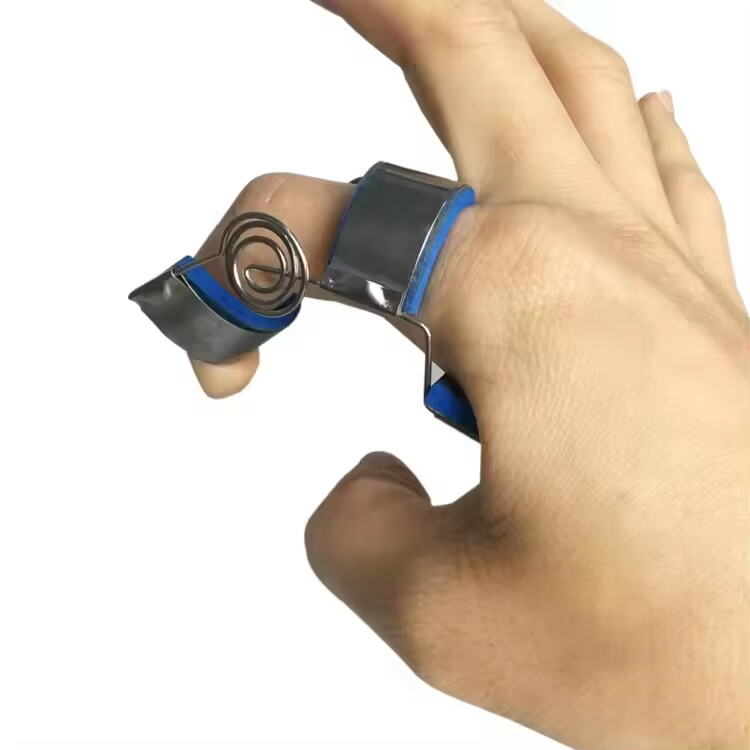The Importance of Hand Strength and Flexibility for Musicians
How Hand Health Impacts Musical Performance
Hand health is crucial for musicians seeking to enhance their musical performance and proficiency. Stronger hands provide improved control over instruments, allowing for accurate and nuanced sound production. For example, pianists and guitarists benefit from increased hand strength when executing complex chords and finger placements. Research indicates that hand flexibility also significantly impacts playing techniques; musicians with greater finger agility are better equipped to execute rapid sequences, especially on string instruments. A study published in the Journal of Music Therapy highlights how hand flexibility contributes to the fluidity of musical styles and execution. Additionally, musicians often dedicate many hours to practice, sometimes leading to hand-related injuries. For instance, the compound annual growth rate in the occurrence of practice-related hand injuries among musicians is 2.5%. These statistics underscore the need for maintaining robust hand health to support long-term musical success.
Common Challenges Faced by Musicians
Musicians commonly face hand-related challenges that can hinder their performance and career progression. Issues such as repetitive strain injuries and fatigue are prevalent due to the demanding nature of musical practice and performances. These conditions, characterized by persistent pain and discomfort, can greatly affect a musician's ability to perform and may lead to temporary pauses in their career. The psychological impact of hand injuries is also profound; many musicians experience a decline in confidence and performance quality due to the fear of recurring injuries. Insights from professional musicians reveal that dealing with hand-related challenges can be overwhelming. For example, world-renowned violinist Itzhak Perlman has shared his personal struggles with hand fatigue, impacting his ability to perform at peak levels. Testimonies from musicians highlight the importance of addressing hand issues promptly and adopting preventive measures to maintain optimal hand health.
Why Musicians Need Hand Exercise Devices
Preventing Injuries (Carpal Tunnel, Tendonitis)
Musicians are often prone to injuries like carpal tunnel syndrome and tendonitis due to prolonged playing without proper hand exercises. The mechanics of these injuries typically involve repetitive strain on the tendons and nerves in the hand and wrist, which can be exacerbated by unsuitable posture and continuous stress. By integrating hand exercise devices into their routines, musicians can effectively alleviate the risks associated with these conditions. Experts in ergonomics emphasize the importance of hand exercises in reducing musculoskeletal disorders. Recommendations from healthcare professionals highlight how exercise devices serve as a preventive measure by enhancing flexibility and reducing strain. This proactive approach allows musicians to maintain their performance quality over time without the setback of injury.
Improving Dexterity and Speed
Hand exercise devices are incredibly beneficial in enhancing finger dexterity and speed, which are crucial for various musical styles and instruments. Specific hand exercises target muscle groups in the fingers and hands, fostering improved finger agility and rapid movement necessary for intricate performance techniques. Expert opinions underline the essential speed requirements for different instruments, indicating that advanced dexterity allows musicians to achieve their performance goals with precision. Considerations from case studies demonstrate how musicians have successfully improved their dexterity through dedicated practice with hand exercise devices, showcasing tangible results in their agility and technical prowess. These improvements reflect not only in personal accomplishment but also in enhanced creative expression through music.
Enhancing Endurance for Long Performances
Muscular endurance plays a pivotal role in maintaining high-quality performance over extended periods. For musicians, especially those who engage in long practice sessions or concerts, enhancing endurance is vital. The concept of muscular endurance refers to the ability to sustain repetitive movements for a prolonged duration without fatigue. Incorporating specific exercises and hand devices can significantly boost this endurance, allowing musicians to perform effectively throughout lengthy performances. Studies indicate the positive effects of structured exercise routines on endurance levels, contributing to sustained high-quality music production. Anecdotal evidence from musicians further corroborates the impact of improved endurance, illustrating how it leads not only to better performance quality but also to career longevity. Through these efforts, musicians can preserve their hand health and continue to thrive in their craft.
Top 5 Hand Exercise Devices for Musicians
Finger Resistance Bands: Boosting Flexibility and Range of Motion
Finger resistance bands are a fantastic tool for musicians looking to boost their flexibility and range of motion. They work by providing resistance against which users must move their fingers, thereby encouraging greater strength and flexibility over time. One of the key benefits of these bands is their varying resistance levels, catering to different skill levels and finger strengths. Musicians have found these bands particularly useful in integrating into their warm-up routines to ensure their fingers are agile before playing. Many testimonials sing the praises of these bands for preparing hands effectively, significantly reducing stiffness, and increasing finesse.
Adjustable Grip Strengtheners: Building Overall Hand Strength
Adjustable grip strengtheners are essential for musicians aiming to build comprehensive hand strength. These devices target various muscle groups in the hands and allow users to adjust resistance levels, making them highly adaptable. By tailoring workouts to one's needs, musicians can steadily enhance their hand strength, which is crucial for achieving precision and power in playing. Studies have shown that users report significant skill improvements, particularly in sustained strength, helping them play complex pieces with greater ease and confidence. These grip strengtheners prove themselves invaluable with tangible results in musicians' performance capabilities.
Therapy Putty: Refining Fine Motor Skills
Therapy putty serves as a versatile tool to refine fine motor skills, critical for musicians across all instruments. By squeezing and manipulating this putty, musicians can enhance their finger independence and coordination, a necessity for playing intricate passages. Experts within the music therapy field frequently advocate for its use, highlighting its role in developing muscle memory and precision. As a result, musicians find therapy putty to be a practical and straightforward addition to their exercise regimen, often observing notable improvements in their ability to execute delicate nuances in their performances.
Finger Exercisers: Targeting Individual Finger Control
Finger exercisers are designed to isolate and strengthen individual fingers, crucial for musicians who need precise control over their instruments. These devices allow users to focus on each finger, enhancing performance accuracy and minimizing injury risks. By using finger exercisers, musicians achieve better articulation and fluidity in their finger movements. Experts recommend incorporating targeted exercises with these devices into daily routines, as they significantly bolster finger control and dexterity. Reports from musicians reflect noticeable benefits in their play, as exercises translate into more precise and confident performances.
Thumb/Wrist Trainers: Strengthening Specific Muscle Groups
Thumb and wrist trainers provide focused strength development for specific muscle groups, influencing playability and performance. Strong wrist and thumb muscles are essential across various musical genres, contributing to technique and endurance. By utilizing these trainers, musicians can address weaknesses that might hinder their performance, improving overall dexterity and strength. Testimonials from musicians who routinely use these devices highlight enhanced playing capabilities and decreased fatigue during long sessions. These tools are instrumental in achieving the balance of power and finesse needed for successful musicianship.
How to Choose the Right Hand Exercise Device
Key Features to Prioritize (Resistance Levels, Portability)
When selecting a hand exercise device, it’s crucial to prioritize features that align with your needs. Adjustable resistance levels are vital as they cater to varying hand strengths, allowing progressive training. Devices like adjustable grip strengtheners offer a range of resistance options, enhancing overall hand strength, as they help target specific muscle groups over time. For musicians who frequently travel, portability is another essential feature. Compact and lightweight devices can be effortlessly incorporated into daily routines, ensuring flexibility in maintaining hand fitness. Additionally, examining the material and design quality of the device is essential. Durable and ergonomically designed Products not only ensure longevity but also prevent discomfort and injury, making your practice sustainable in the long run.
Matching Devices to Your Musical Instrument
Matching the right hand exercise device with your musical instrument is pivotal for optimal performance and injury prevention. Different instruments require specific hand uses, necessitating targeted exercises. For instance, string instrument musicians often benefit from finger resistance bands to boost dexterity, while brass instrument players might find thumb and wrist trainers more beneficial for building strength in specific muscle groups. Recommendations from music instructors underscore the importance of correlating exercise choices with instrument demands, ensuring musicians enhance their hand capabilities effectively. By aligning your exercise device with your instrument's needs, you can significantly improve your skill level and playability.
FAQ
Why is hand health important for musicians?
Hand health is essential for musicians as it affects their ability to perform with precision, control, and endurance. Healthy hands allow musicians to execute complex techniques and prevent injuries.
What are common hand-related injuries for musicians?
Common hand-related injuries for musicians include repetitive strain injuries, carpal tunnel syndrome, and tendonitis, often resulting from prolonged playing and poor hand posture.
How can hand exercise devices prevent injuries?
Hand exercise devices can help prevent injuries by strengthening hand muscles, improving flexibility, and reducing strain. They serve as a proactive measure to maintain hand health and performance quality.
What should musicians consider when choosing hand exercise devices?
Musicians should consider features such as resistance levels, portability, durability, and how well the device matches their specific instrument needs to ensure effective hand fitness training.

 EN
EN









































